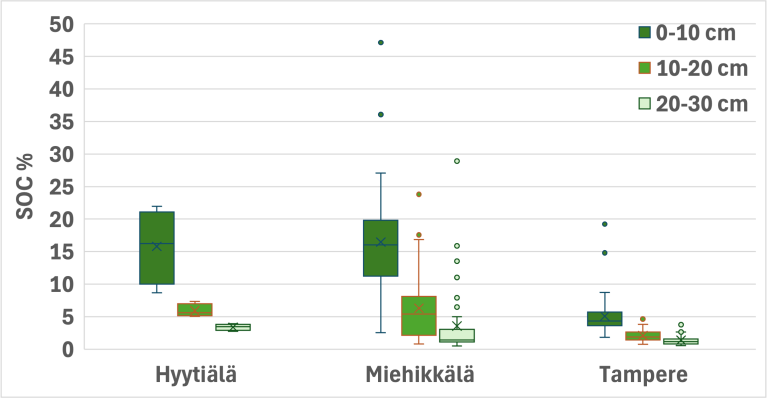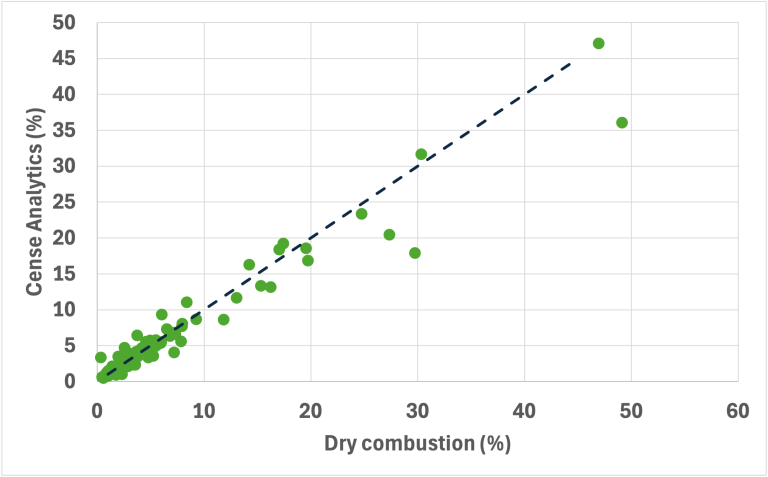Rapid on-site SOC stock analysis: Unlocking the forest soil carbon
Forest soils play a crucial role in determining the overall carbon storage capacity of boreal forests. In fact, the majority of carbon in these ecosystems—often more than 60%—is stored belowground rather than in tree biomass. Soils act as both a carbon sink and a potential source, depending on environmental conditions and disturbance history. Conversely, undisturbed soils can sequester carbon for centuries through slow decomposition and peat formation. As a result, the stability and management of boreal forest soils are critical for maintaining global carbon balance and mitigating climate change.
Cense Analytics’ rapid on-site measurement technology for forest soils is transforming the ability to collect accurate and timely data on soil carbon stocks and dynamics. Traditional laboratory-based methods are often slow, expensive, and spatially limited, making it difficult to capture the high variability of soil carbon across forest landscapes. In contrast, Cense Analytics’ new field-deployable laser measurement method enables near real-time assessment of soil carbon content, structure, and moisture. This rapid data collection allows researchers and forest managers to monitor short- and long-term changes in soil carbon more effectively, track responses to management practices or climate disturbances, and refine models of carbon cycling at local and regional scales. The resulting data improve the accuracy of carbon inventories and support adaptive management strategies aimed at maintaining or enhancing soil carbon storage.
In addition to advancing scientific understanding, Cense Analytics’ rapid soil carbon measurement plays a key role in enabling the inclusion of forest soil carbon in voluntary carbon credit (VCC) markets. Reliable, field-verified data are essential for quantifying and verifying the amount of carbon sequestered in soils—a prerequisite for generating credible carbon credits. By providing cost-effective and scalable measurement solutions, on-site technologies reduce the uncertainty and verification costs traditionally associated with soil carbon accounting. This makes it more feasible for forest owners and managers to demonstrate measurable climate benefits from soil carbon sequestration and participate in emerging carbon markets. As a result, these innovations not only enhance the transparency and trustworthiness of carbon credits but also create new economic incentives for sustainable forest management that prioritizes soil health and long-term carbon storage.
Cense Analytics’ measurement team has been actively advancing forest soil carbon assessment through extensive fieldwork and technology development in southern Finland. Operating across diverse boreal forest types in different stages of maturity the team has conducted systematic soil sampling campaigns aimed at refining both sampling protocols and Cense Analytics’ on-site soil organic carbon (SOC) measurement techniques. Using a combination of traditional soil core sampling and the portable laser-based measurement device we have developed a robust workflow for spatially representative forest soil carbon data collection. The achieved measurement accuracy on fresh soil samples is comparable to laboratory standard measurement with correlation factor of 0.95 across a wide dynamic range. Thus, this approach not only enhances the precision of soil carbon estimates but also reduces the time and cost associated with conventional methods. By integrating geospatial data and machine learning, Cense Analytics is further improving spatial upscaling, enabling more comprehensive regional assessments of forest soil carbon storage.


The field campaigns in southern Finland have provided valuable insights into how soil properties, moisture regimes, and forest management practices influence carbon dynamics across varying conditions. Through iterative testing and calibration, Cense Analytics has optimized their on-site measurement technology to function effectively in the challenging terrain and climatic conditions typical of boreal forests. This development work has laid the groundwork for scalable, standardized soil carbon measurement protocols that can support both scientific research and carbon accounting frameworks. Ultimately, the company’s efforts are helping bridge the gap between soil science and practical climate solutions—enabling more accurate monitoring of carbon sequestration and strengthening the foundation for integrating forest soils into verified carbon credit systems.

